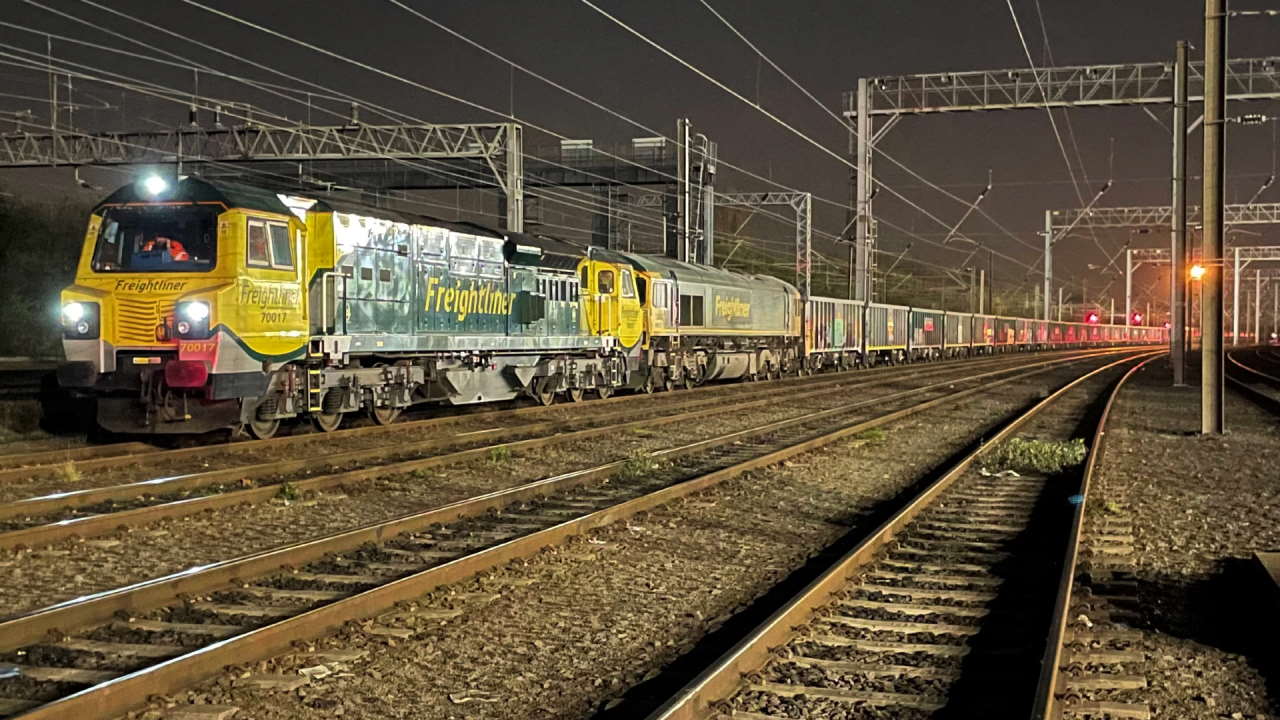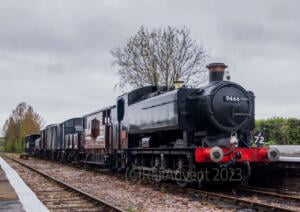This week, the heaviest freight train to ever travel on the West Coast Mainline made its debut from the Peak District to London with construction materials.
The so-called Jumbo train hauled 3,600 tonnes of aggregate materials from Tarmac’s Tunstead Quarry to Wembley Yard in London, a total of 203 miles.
39 wagons were hauled by a Freightliner Class 66 and Class 70, making a combined length of 590 metres.
The train was carrying materials for use on roads and major projects in the South East, such as HS2.
Network Rail, Freightliner and Tarmac were able to test the long freight train whilst fewer trains were running on the West Coast Main Line during the current lockdown.
David Hunter, senior route freight manager for Network Rail, said: “The pandemic’s made us all think differently and in rail freight’s case, we’re taking advantage of the space available in the timetable.”
“It’s the first time we’ve seen a train of this weight and length take this route. By transporting more and further afield, we’re showing how the rail industry is building back better – adapting more efficiently to the needs of our economy and environment.”
Tim Shakerley, Managing Director of UK Rail Services at Freightliner said: “Freightliner has worked closely with Tarmac and Network Rail to demonstrate the viability of running jumbo services from the Peak District.”
“Transporting more freight on each train boosts both improvements to the productivity and efficiency of services and drives further environmental benefits by reducing the carbon emissions of each tonne of freight moved.”
“We welcome the cross-industry support to trial these initiatives while demand for passenger travel is reduced and look forward to working in partnership with all stakeholders to secure these efficiency gains into the future.”
Chris Swan, Head of Rail at Tarmac, said: “Effective use of the rail network is key in supporting the transition to a net zero society, and collaborative approaches are vital in helping the industry drive forward more innovation and sustainable solutions.”
“We’re delighted to see the successful trail our first 40 wagon train transporting essential construction materials from Derbyshire to London as part of our ongoing commitment to supporting the delivery a low-carbon built environment.”
Where Next?
RAILADVENT NEWS
The latest railway news
FREE NEWSLETTERS
Signup to our daily and weekly newsletters
RAILADVENT SHOP
Railway Prints, DVD’s / Blu-Ray’s, books and more
LOCOSTOP COMMUNITY
Come and share your railway pictures
UK STEAM INFO
Upcoming mainline steam tours/loco movements
NETWORK RAIL
Visit their website






Responses
Moving Freight by Rail is apparently more environemntally friendly as trains burn less fuel per ton mile than trucks. I read a blog that said “According to the Association of American Railroads (AAR), freight railroads can move one ton of freight an average of 479 miles on a single gallon of fuel. On top of that, using rail transport over road transport can lower greenhouse gas emissions by 75%.”
Are you serious!? I only saw 6 wagons on the footage!
(Okay now i know there were 19 to 20…How much can these beasts pull?)
In about 1980 I was working for a company WWA who hired a suite of offices in Newport Gwent railway station on the 2nd floor. It provided a really good view or all the trains. The chap I was working with new his stuff and at a particular time in the morning would look out to see the train going to Llanwern steel works – why I mentioning it here is because it was always pulled by 3 hard working diesels with a large number of large wagons full of coal. I obviously don’t know the weight of the train but it must have been very heavy.
Wow what an exciting sight wish I could have seen it
Heartiest congratulations ! , I used to be a driver at Buxton, and we though 2,500 tons was heavy!!, with a class 60!!